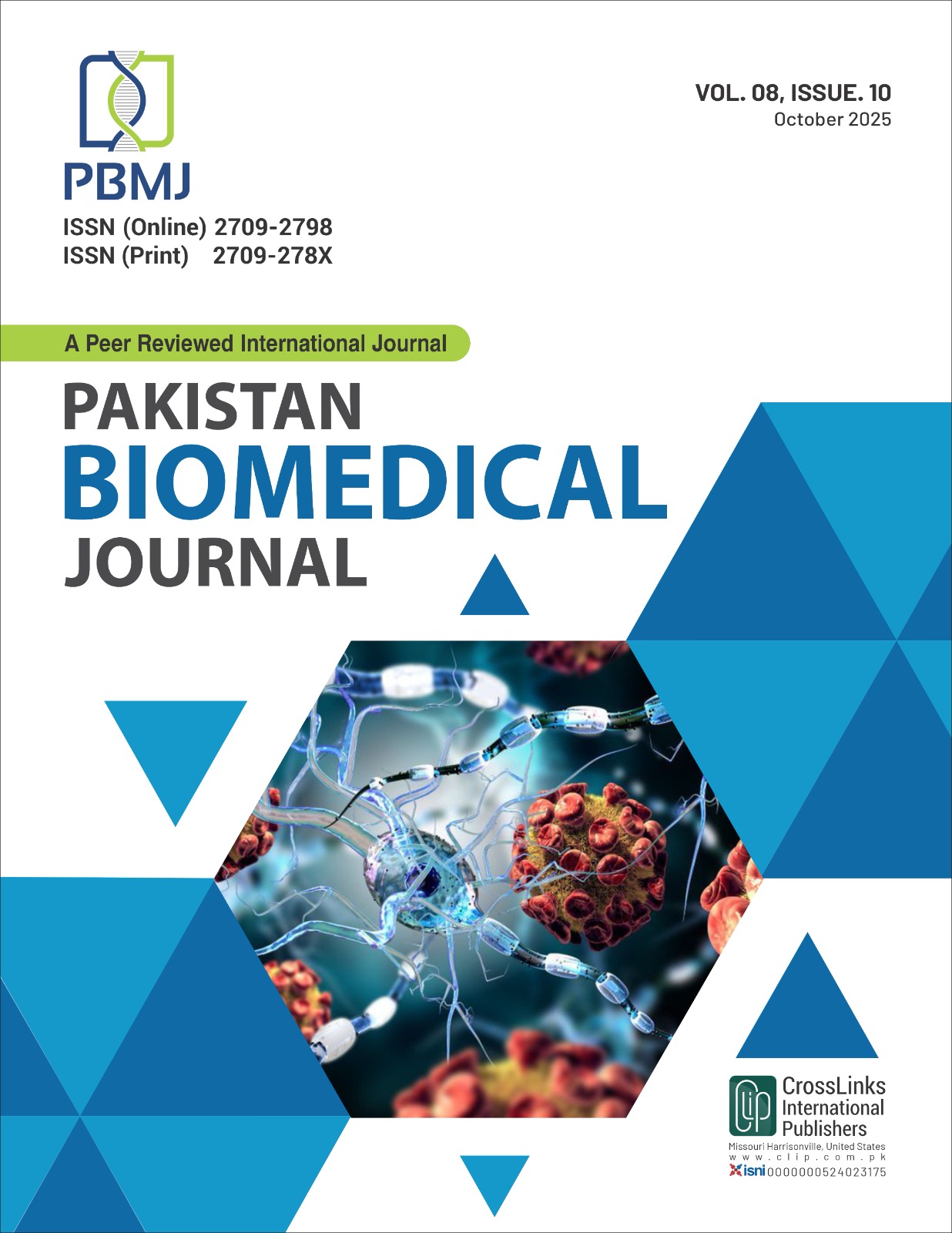Early Detection of Chronic Kidney Disease: The Diagnostic Value of Ultrasonography
Chronic Kidney Disease and Ultrasonography
DOI:
https://doi.org/10.54393/pbmj.v8i10.1317Abstract
Chronic kidney disease (CKD) refers to a lasting decline in kidney function, which is characterized by a glomerular filtration rate (GFR) lower than 60 mL/min per 1.73 m 2 or tracers of kidney injury at least three months [1]. Kidneys are important wedge-shaped organs located on both sides of the spine and eliminate waste products and surplus fluid in the body. CKD is a major health issue in the world, which is directly associated with the enhanced morbidity, death, and cardiovascular risk.
Increased renal echogenicity, a decreased parenchymal and cortical thickness, and a decrease in renal length are ultrasound changes which are signs of permanent structural injury. With the development of CKD, echogenicity increases whereas the size and cortical thickness of the kidney decrease. The length of the kidneys less than 10 cm is usually an indication of irreversible permanent damage [2].
CKD is classified based on GFR into five levels including Stage 1 (GFR 90 or more), Stage 2 (60 to 89), Stage 3a (45 to 59), Stage 3b (30 to 44), Stage 4 (15 to 29), and Stage 5 (below 15 mL/min/1.73 m 2) [3]. Other complementary biomarkers like plasma 2-trace protein (BTP) and cystatin C enhance the precision of the diagnosis and help in determining the risk of progression [4]. Ultrasonography improves early detection and accuracy in staging that allows kidney failure to be prevented and intervened in time.
Social and lifestyle determinants such as alcohol and tobacco consumption, nutritional habits, sedentary habits, stress, social isolation, and financial constraints are significant risk factors of CKD. The major causes of end stage renal failure are hypertension and diabetes. Ultrasonographic evaluation is essential in the detection of irreversible changes in the kidney early and in the management of the condition as CKD progresses. Widespread adoption of ultrasound screening, accompanied by health education of the population, would help to considerably decrease the CKD burden. Promoting better health lifestyles and regular renal examination is an effective and realistic way of preventing kidney failure and enhancing the health outcomes of populations [5,6].
Management of the CKD associated with diabetes should be well-monitored both in terms of kidney damage and kidney functioning. Prevention of hypertension, diabetes, and obesity is thus important through the use of public health initiatives. Sufficient management of these conditions can greatly decrease CKD-incidence, whereas lifestyle changes such as balanced diet, physical exercise, and smoking should be taken into consideration as preventive measures.
References
Lopez-Giacoman S, Madero M. Biomarkers in Chronic Kidney Disease, from Kidney Function to Kidney Damage. World Journal of Nephrology. 2015 Feb; 4(1): 57. doi: 10.5527/wjn.v4.i1.57
Petrucci I, Clementi A, Sessa C, Torrisi I, Meola M. Ultrasound and Color Doppler Applications in Chronic Kidney Disease. Journal of Nephrology. 2018 Dec; 31(6): 863-79.doi: 10.1007/s40620-018-0531-1
Decreased GJ. Definition and classification of CKD. Kidney International. 2013; 3: 19-62.doi:10.1038/kisup.2012.64
Wajda J, Dumnicka P, Sporek M, Maziarz B, Kolber W, Ząbek-Adamska A et al. Does Beta-trace Protein (BTP) Outperform Cystatin C as a Diagnostic Marker of Acute Kidney Injury Complicating the Early Phase of Acute Pancreatitis? Journal of Clinical Medicine. 2020 Jan; 9(1): 205.doi: 10.3390/jcm9010205
Noble R and Taal MW. Epidemiology and Causes of Chronic Kidney Disease. Medicine. 2019 Sep; 47(9): 562-6.doi: 10.1016/j.mpmed.2019.06.010
Chapman E, Haby MM, Illanes E, Sanchez-Viamonte J, Elias V, Reveiz L. Risk Factors for Chronic Kidney Disease of Non-traditional Causes: A Systematic Review. Revista Panamericana De Salud Pública. 2019 Mar; 43: e35.doi: 10.26633/RPSP.2019.35
Downloads
Published
How to Cite
Issue
Section
License
Copyright (c) 2025 Pakistan BioMedical Journal

This work is licensed under a Creative Commons Attribution 4.0 International License.
This is an open-access journal and all the published articles / items are distributed under the terms of the Creative Commons Attribution License, which permits unrestricted use, distribution, and reproduction in any medium, provided the original author and source are credited. For comments editor@pakistanbmj.com











